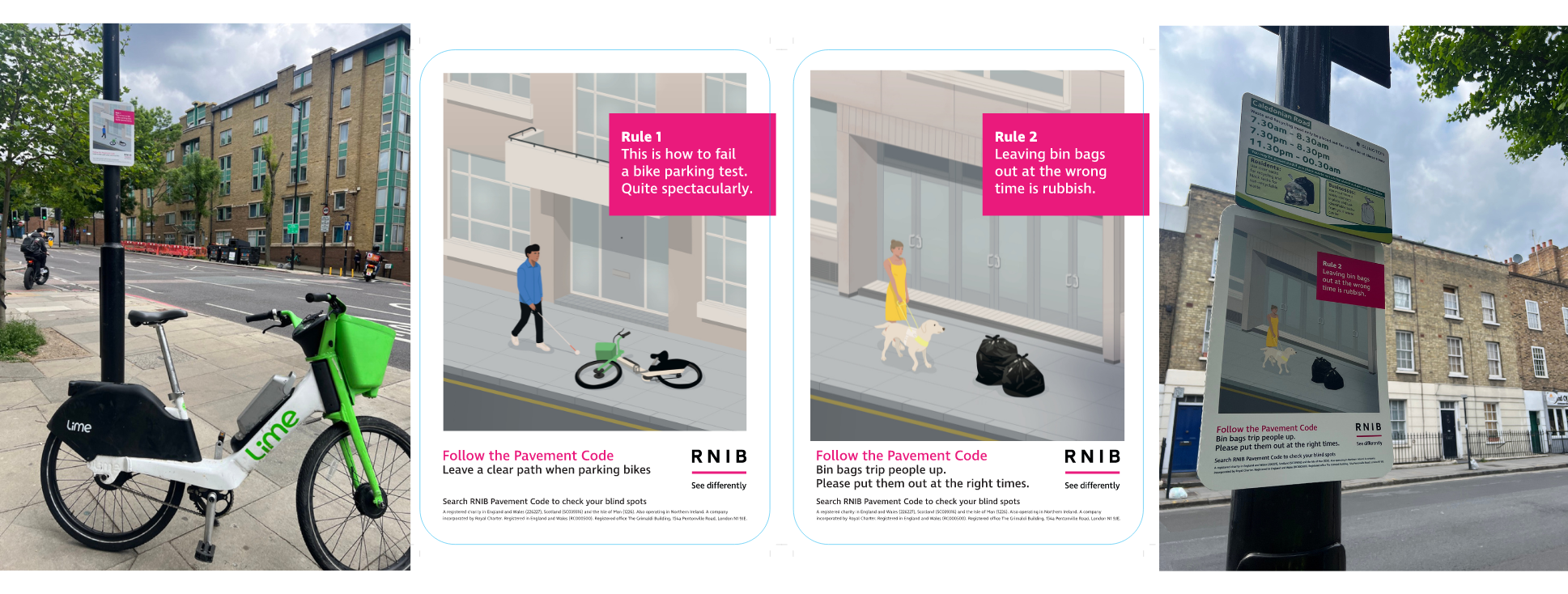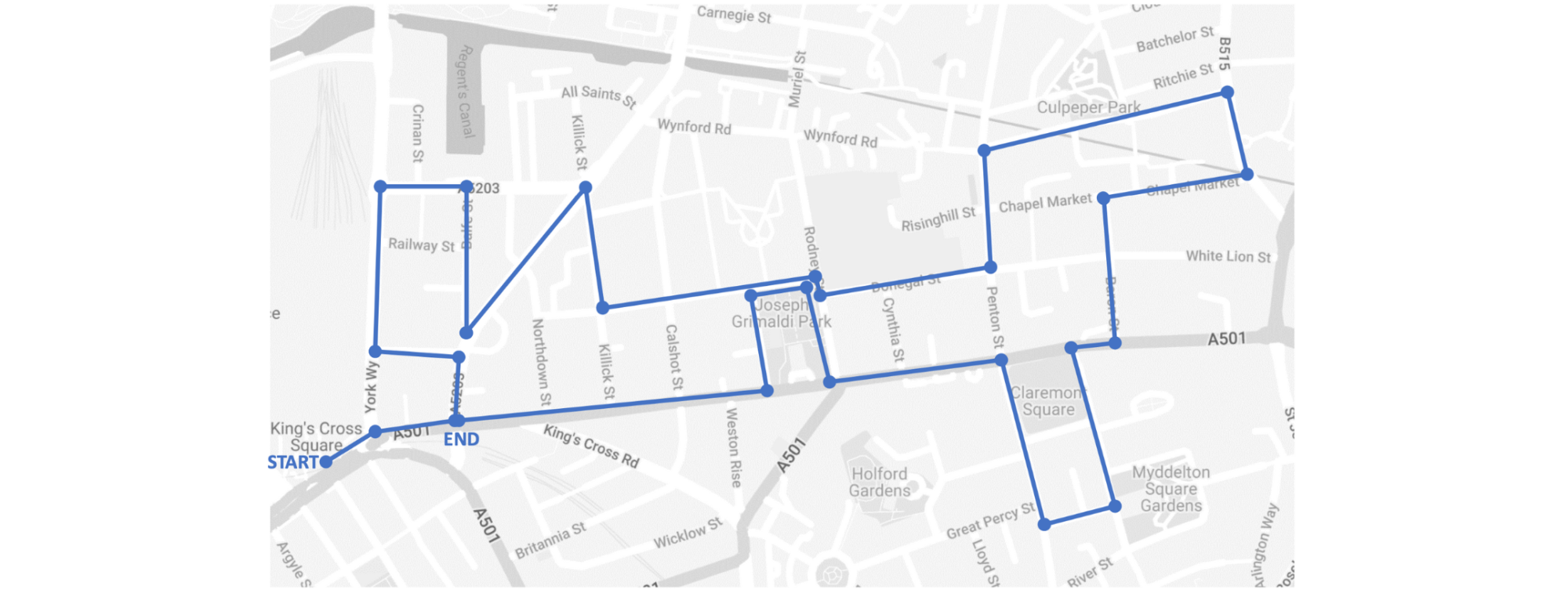Background
Problematic attitudes in relation to sight loss remain prevalent within UK society. These attitudes translate into discriminatory behaviours towards people with sight loss, from everyday frustrations to systemic issues. RNIB have big ambitions to transform the lived experience of blind and partially sighted people in the UK and the organisation asked us to work on a programme using behavioural science to change and improve public perceptions and behaviours towards people with sight loss.
Working with Islington Council and Groundwork London, we launched a first of its kind pilot aiming to get residents and local businesses to keep pavements clear of obstructions and help them have better interactions with someone with sight loss.
We successfully reduced obstructions over the 12-week intervention period, and improved the sighted public’s knowledge on how best to interact with someone with sight loss.
Insight
An important part of this project was ensuring people with sight loss were always involved in the conversation. We had two sessions with a consultation group of people with sight loss to hear about their lived experiences of a list of problematic behaviours we identified through an evidence review.
The evidence led us to two behavioural categories to tackle: pavement obstructions and awkward interactions
Our research revealed sighted members of the public are unsure how to offer assistance, give directions, or simply interact appropriately with a blind or partially sighted person.
“Ask, donʼt assume” was a recurrent theme that arose in workshops and conversations, and is the underlying principle in tackling interactions. The one specific action we wanted people to do when interacting with a blind or partially sighted person was say hello and ask if they need help.
In a survey, we asked blind and partially sighted people to rate how much improvements in different behaviours would impact their lives. 70% of respondents said if where they walked was clear from obstructions, this would have a major improvement on their lives.
Intervention
Our pilot location was Islington London, around RNIB’s head office. We developed 3 interventions to tackle the most frequent pavement obstructions in the pilot area: rubbish, hire bikes, A-boards and street furniture left out by businesses. Artwork by The&Partnership.
1. Signage targeting obstruction hotspots
Signage displayed where hire bikes and rubbish were most likely to be left. Designed to encourage users to leave a clear path when parking bikes and remind residents and businesses to put their bins out at the correct times.

2. Bike tags for obstructing hire bikes
Designed to be tagged on hire bikes left in spots that make it difficult to walk along the pavement. The wording challenges the next user to park the bike better than the previous one, using RNIB’s signature pink colour to stand out.

3. Guidebook to encourage the right behaviours
Designed to show readers how to offer help to someone who is blind or partially sighted, whilst also encouraging people to not obstruct pavements. Each behaviour in the book were specific annoyances blind and partially sighted people experience from the sighted public.

Implementation
We collaborated with Islington Council and Groundwork London to deliver the interventions.
A community engagement programme was led by Groundwork London who engaged with residents and businesses in the pilot area. They encouraged businesses to display a pledge in their windows in support for the campaign, attended events and manned pop-up stalls to engage residents, and distributed posters in resident blocks.

They also led two school assemblies to teach young children about reducing obstructions with hopes that pester power will translate to parents changing behaviour.
Islington Council tagged obstructing hire bikes across the area – distributing a total of 108 throughout the pilot period.
Impact
Our evaluation partner, Freshwater Strategy, used a robust evaluation method to measure whether obstructions had reduced over the trial period and if knowledge of how best to assist a blind or partially sighted person improved. This included a quantitative survey with sighted members of the public, in-depth interviews with blind and partially sighted residents in our pilot location, and filmed streetwalks along a consistent route where obstructions were captured on camera and counted throughout the intervention period.

Generally, our interventions were well-received by residents and businesses in the area who were engaged in our programme, and 73% said the interventions had an impact on them. The results found the number of total obstructions decreased over the intervention period with hire bikes seeing the most dramatic difference.
Bike obstructions decreased by 62% in the first 3 weeks of the intervention period
Knowledge scores on how best to assist a blind or partially sighted person also improved, with the most improvement seen around awareness of how best to park a hire bike and offer directions.
Since the pilot, we are exploring ways we can scale our interventions and disseminate our learnings to relevant organisations or charities who share our cause.